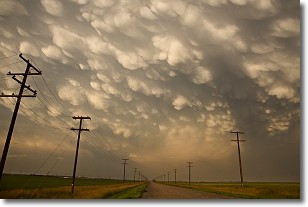Weather Alert in California
Beach Hazards Statement issued August 11 at 9:07PM PDT until August 12 at 9:00PM PDT by NWS San Francisco CA
AREAS AFFECTED: Coastal North Bay Including Point Reyes National Seashore; Northern Monterey Bay
DESCRIPTION: * WHAT...A long period southwesterly swell will result in an increased risk for sneaker waves and rip currents.. * WHERE...Coastal North Bay Including Point Reyes National Seashore and Northern Monterey Bay Counties. * WHEN...Through Tuesday evening. * IMPACTS...Sneaker waves can unexpectedly run significantly farther up the beach than normal, including over rocks and jetties. Rip current conditions are present. Rip currents are typically more frequent and stronger in the vicinity of jetties, inlets, and piers. Swimmers should always swim near a lifeguard. * ADDITIONAL DETAILS...Greatest risk will be along southwest facing beaches. Coastal sections of Marin and Santa Cruz counties. In particular southwest facing beaches, including but not limited to Stinson Beach, Santa Cruz Boardwalk Beach, and Twin Lakes Beach.
INSTRUCTION: Remain out of the water to avoid hazardous swimming conditions.
Want more detail? Get the Complete 7 Day and Night Detailed Forecast!
Current U.S. National Radar--Current
The Current National Weather Radar is shown below with a UTC Time (subtract 5 hours from UTC to get Eastern Time).

National Weather Forecast--Current
The Current National Weather Forecast and National Weather Map are shown below.

National Weather Forecast for Tomorrow
Tomorrow National Weather Forecast and Tomorrow National Weather Map are show below.

North America Water Vapor (Moisture)
This map shows recent moisture content over North America. Bright and colored areas show high moisture (ie, clouds); brown indicates very little moisture present; black indicates no moisture.

Weather Topic: What are Mammatus Clouds?
Home - Education - Cloud Types - Mammatus Clouds
 Next Topic: Nimbostratus Clouds
Next Topic: Nimbostratus Clouds
A mammatus cloud is a cloud with a unique feature which resembles
a web of pouches hanging along the base of the cloud.
In the United States, mammatus clouds tend to form in the warmer months, commonly
in the Midwest and eastern regions.
While they usually form at the bottom of a cumulonimbis cloud, they can also form
under altostratus, altocumulus, stratocumulus, and cirrus clouds. Mammatus clouds
warn that severe weather is close.
Next Topic: Nimbostratus Clouds
Weather Topic: What is Precipitation?
Home - Education - Precipitation - Precipitation
 Next Topic: Rain
Next Topic: Rain
Precipitation can refer to many different forms of water that
may fall from clouds. Precipitation occurs after a cloud has become saturated to
the point where its water particles are more dense than the air below the cloud.
In most cases, precipitation will reach the ground, but it is not uncommon for
precipitation to evaporate before it reaches the earth's surface.
When precipitation evaporates before it contacts the ground it is called Virga.
Graupel, hail, sleet, rain, drizzle, and snow are forms of precipitation, but fog
and mist are not considered precipitation because the water vapor which
constitutes them isn't dense enough to fall to the ground.
Next Topic: Rain
Current conditions powered by WeatherAPI.com




